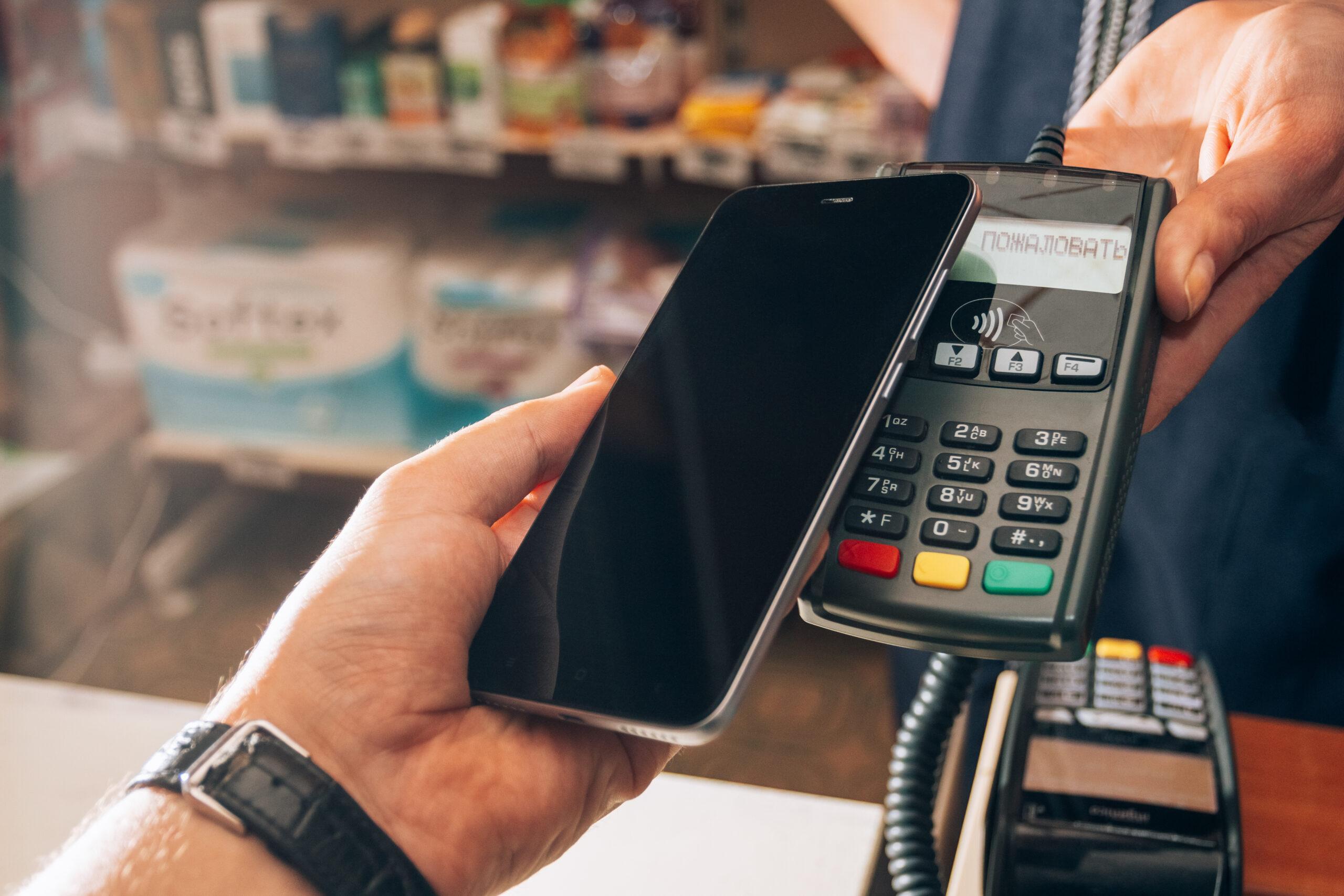MENU
Starting a Business
- Best Small Business Loans
- Best Business Internet Service
- Best Online Payroll Service
- Best Business Phone Systems
Our Top Picks
- OnPay Payroll Review
- ADP Payroll Review
- Ooma Office Review
- RingCentral Review
Our In-Depth Reviews
Finance
- Best Accounting Software
- Best Merchant Services Providers
- Best Credit Card Processors
- Best Mobile Credit Card Processors
Our Top Picks
- Clover Review
- Merchant One Review
- QuickBooks Online Review
- Xero Accounting Review
Our In-Depth Reviews
- Accounting
- Finances
- Financial Solutions
- Funding
Explore More
Human Resources
- Best Human Resources Outsourcing Services
- Best Time and Attendance Software
- Best PEO Services
- Best Business Employee Retirement Plans
Our Top Picks
- Bambee Review
- Rippling HR Software Review
- TriNet Review
- Gusto Payroll Review
Our In-Depth Reviews
- Employees
- HR Solutions
- Hiring
- Managing
Explore More
Marketing and Sales
- Best Text Message Marketing Services
- Best CRM Software
- Best Email Marketing Services
- Best Website Builders
Our Top Picks
- Textedly Review
- Salesforce Review
- EZ Texting Review
- Textline Review
Our In-Depth Reviews
Technology
- Best GPS Fleet Management Software
- Best POS Systems
- Best Employee Monitoring Software
- Best Document Management Software
Our Top Picks
- Verizon Connect Fleet GPS Review
- Zoom Review
- Samsara Review
- Zoho CRM Review
Our In-Depth Reviews
Business Basics
- 4 Simple Steps to Valuing Your Small Business
- How to Write a Business Growth Plan
- 12 Business Skills You Need to Master
- How to Start a One-Person Business
Our Top Picks
How Telematics Can Improve Worksite Productivity

Table of Contents
Telematics technology is becoming a staple among businesses that use fleets of vehicles and heavy machinery. Telematics is more than just GPS tracking; it’s tech that offers you a gold mine of data. You can use that data to improve your bottom line and run your business and worksite more efficiently. The best telematics systems keep track of dozens of aspects and components, allowing you to build an improvement plan for your worksite.
The combination of GPS, monitoring systems and a data-gathering interface make up modern telematics systems. This allows you to keep track of individual vehicles when they’re out in the field. Not only is it smart to know where your vehicles are at all times, but you’ll also have a complete history of the fleet’s journey. Diagnostics allow you to monitor the status of machinery, whether or not it’s on-site.
Editor’s note: Need a GPS fleet management solutions for your business? Fill out the below questionnaire to have our vendor partners contact you with free information.
What is a telematics system, and how does it work?
A telematics system is installed in a vehicle to collect data. A cellular network transmits the data to the cloud, making it available on any device connected to the system. The Global Navigation Satellite System triangulates the vehicle’s location at any given time.
The device can collect many different types of information that can be beneficial to your business. It can monitor speed, fuel costs and the condition of the vehicle. It can also find the vehicle if it’s stolen. Given the cost of most industrial vehicles, that’s a huge win.
Telematics equipment can be plug-and-play or hard-wired. Plug-and-play equipment can generally be self-installed via the ODB-II socket, while hard-wired equipment may require you to pay the telematics company for installation.
How does telematics improve your business?
A telematics system provides a host of opportunities for all businesses to improve efficiency and save on fuel. Still, it’s important to understand the full spectrum of benefits that come with incorporating data collection and analysis into your fleet management strategy. We live in a data-driven world. If your business isn’t taking full advantage of all the cloud-based tools at its disposal, it may be lagging behind competitors.
Money savings
The most significant benefit to incorporating telematics into your fleet management strategy is saving money. By signing up for these cloud-based services, you’re taking steps toward improving your bottom line. From the outset, telematics services can be written off as a deductible business expense. This can help you decrease your taxable income, which can save you money come tax time. Typically, any hardware components needed to outfit your vehicles, such as electronic logging devices, can be written off as capital expenses and monthly subscription fees can be credited toward operational costs.
The average trucker drives about 500 miles per day or roughly 125,000 miles per year. Cutting just a few pennies per mile can save your business a bundle.
Improved fuel efficiency
By decreasing fuel consumption, your business can save money. A significant feature of telematics software is improved visibility into fuel usage and efficiency. Telematics solutions include driver fuel usage statistics, overall miles-per-gallon figures and even driver coaching tips to encourage efficiency. This, combined with better insight into when to hit the pumps, will allow your business to increase its bottom line.
Better management of your business
For small business owners, it’s essential to audit and adjust your management style constantly. Great managers evolve often. Telematics is a tool you can use to manage your workers and assets better, potentially accelerating your business’ evolution. You’ll know when assets and drivers have left your location, where they are, when they’ve arrived at their destination and how long it took them to get there. Fleet safety compliance is easier to achieve too. You’ll be able to work with drivers to ensure they’re operating in a safe, responsible manner and you’ll be able to coach them on improving fuel efficiency. A major facet of running a business is ensuring everyone is functioning at the highest level possible: Great managers make their workers better versions of themselves. By using all the tools at your disposal, you can do this.
GPS and telematics systems sometimes require a considerable expense. But that investment is often returned in several ways, from lower insurance and fuel costs to greater vehicle lifespan and higher vehicle utilization rates.
How can businesses with fleets use and benefit from telematics?
Telematics has the potential to save your fleet time and fuel while improving safety and communication between management, drivers and operators. What telematics can do for you will depend on the type of data you’re seeking.
When choosing a GPS fleet management system, ensure it has all the features and tools you need to support the type of fleet you operate. It should also be easy for both managers and drivers to use.
Here are several factors you can track with telematics and how you could use them to improve your fleet.
Routes
You can track your fleet’s regular routes and use the geodata to plot better routes for faster delivery and less fuel consumption. Pairing your telematics with real-time traffic reports will allow you to reroute vehicles to avoid slowdowns. If your vehicle is stolen, telematics can help police track it down.
Vehicle status
Many telematics systems can record when the vehicle is on, off, moving and idling. You can track a driver’s efficiency to ensure they are making reasonable time without unnecessary stops. You can also monitor vehicle speed and know when drivers are speeding or participating in other reckless driving. This data will help you compile driver reports and identify where drivers need improvement.
Vehicle condition
Knowing how much fuel your vehicle has, as well as how much it’s using for trips, optimizes your fleet planning and lets you know how efficiently each vehicle is running.
Tying monitors to specific systems, like fuel level and tire pressure, will let you know when a vehicle is not running as efficiently as it could and when it’s time for a tune-up. You can prevent serious breakdowns by identifying problems as they materialize, thus increasing safety and saving on maintenance costs.
Customer relations
Telematics isn’t only for the benefit of drivers and those in the office. You can share the data with customers who are expecting important orders so they can plan accordingly. Many GPS fleet tracking platforms now allow you to send links to customers, which allows them to track the live location of their packages.
Dispatching
For businesses deploying vehicles for fieldwork, telematics helps you with dispatch services. Knowing a fieldworker’s location and job status lets you easily reroute them to new jobs nearby without having to return to the garage.
Best GPS fleet management systems for telematics
Competition among the best GPS fleet management systems to provide telematics services to businesses is intense. Below, find out which key telematics functions platform operators have included on their systems.
ClearPathGPS
ClearPathGPS offers a comprehensive, cost-effective fleet management solution designed for businesses. Despite being well-featured, it’s among the more affordable options available and is one of a few to offer both plug-and-play and hard-wired tracking units.
Key features:
- Great mix of safety and route optimization features for greater fuel efficiency
- Custom vehicle maintenance scheduling with real-time vehicle health monitoring
- Excellent usability on both desktop and mobile app
Pricing: $20 per vehicle per month. Enhanced plan is $25 per month.
More information: Read our comprehensive review of ClearPathGPS.
Force
Force stands out for its easy-to-use and efficient telematics features built inside this highly capable GPS fleet management platform. Great for companies providing local services or deliveries but firms of all sizes and in all lines of business will find the software’s insights on driver safety and vehicle performance useful.
Key features:
- Excellent RoadScore scoring feature encourages safer driving
- Real-time tracking of vehicles and visual trails of drivers’ routes
- Set up geofences to monitor vehicles moving in and out of designated areas
Pricing: $20 per vehicle per month.
More information: Read our latest review of Force.
GPS TrackIt
Fleet management software GPS Trackit is best known for its excellent video telematics capabilities. Users benefit from advanced dashcam hardware and a comprehensive suite of tracking and management functionality.
Key features:
- AI-powered dashcam features eye-tracking technology for cab-facing feed
- Wide variety of reports including vehicle health, driver safety and fuel efficiency
- Ability to dial live into a vehicle to see real-time footage
Pricing: Companies can choose from a rolling 30-day, 12-month, 24-month or 36-month contract. Prices start at $24.99 per month per vehicle for fleet tracking on a 36-month contract. Thirty-day contracts cost $20 more per unit per month than 36-month contracts.
More information: Read our up-to-date review of GPS TrackIt.
FleetUp
FleetUp leverages telematics well, which means its clients can get more productivity from their fleet. It focuses on improving driver and vehicle efficiency to increase savings.
Key features:
- Detailed alert system for monitoring driver behavior and vehicle use (including geofences)
- Proactive maintenance scheduling with real-time diagnostic trouble code alerts
- Excellent route optimization that takes into account traffic and road restrictions
Pricing: Four plans are available and priced between $20 and $40 per vehicle per month.
More information: Read our review of FleetUp.
Samsara
Samsara’s in-built telematics provides real-time GPS tracking and data for transport managers with a focus on driver efficiency and safety as well as in-depth vehicle and fleet analytics.
Key features:
- Up-to-the-second vehicle tracking viewable on desktop and mobile app
- Driver behavior alerts and training
- Comprehensive fuel, vehicle and driver performance analysis
Pricing: Pricing is on application only. Fleets with 10 or fewer vehicles must pay for the hardware and airtime upfront.
More information: Read our comprehensive Samsara review.
Azuga
Azuga offers a robust GPS tracking and fleet management solution. It’s a highly capable platform for transport managers who want to drive greater safety and operational efficiency through the analysis of real-time and historical driver and vehicle data.
Key features:
- Smart built-in driver safety training and rewards system
- Excellent real-time monitoring of driver behaviors
- Great suite of tools to reduce fleet downtime and operational costs
Pricing: Ranges from $25 for a GPS unit per month to $60 for the GPS unit and a smart AI-powered dashcam.
More information: Read our latest Azuga review.
Motive
Motive is a detailed, customizable fleet management solution that has a primary focus on driver accountability and safety. That focus is supported by AI-driven analytics and real-time data. It also has a superb suite of vehicle maintenance tools, including real-time status reports and automated service reminders.
Key features:
- Intelligent route for optimal fuel use
- In-house team of dashcam footage reviewers offering extra context on incidents
- Multifactorial driver accountability score
Pricing: There are two charges — one for the equipment (around $150 per unit) and one for service (from $25 per month per vehicle).
More information: Read our up-to-date Motive review.
Verizon Connect
Verizon Connect offers a sophisticated GPS fleet management solution with telematics functionality that improves fleet and driver efficiency, compliance and performance. The company’s roadside assistance service is particularly helpful to managers and drivers.
Key features:
- AEMP 2.0 integration provides deeper operational insights
- Comprehensive maintenance records on all tracked assets and vehicles
- Advanced vehicle performance insights that can be easily customized
Pricing: Prices start at around $20 per month per vehicle for basic fleet tracking.
More information: Read our in-depth Verizon Connect review.
What are the benefits of heavy machinery telematics?
Telematics offers several benefits to construction businesses that regularly operate heavy machinery at worksites or on field assignments. Equipment with this capability can be operated more efficiently and safely, which can result in savings. Major equipment dealers offer versions of their vehicles and machines with telematics installed. Remote diagnostic capabilities allow you to monitor your inventory of machinery and can provide you with valuable data points.
Maintenance tracking
Routine inspections of equipment are commonplace on construction sites. While this is a great preventative measure, constant diagnostic reports are an even better way of tracking a machine’s health. Maintenance tracking with diagnostic reports alerts you to when it’s time for maintenance or to retire the machine. Remote diagnostics can even identify problems the operators and inspectors may be unaware of. These systems can detect if a machine’s engine is working harder or struggling more to accomplish a job compared to its past performance.
Usage tracking
You’ll be able to see the daily usage of your company’s machines as well as how they’re being used. Knowing how often a particular machine is being used can help you plan how many machines should be deployed to the next work site. You can also see when a machine has been idling for too long or if an operator is misusing a piece of equipment, such as overloading it. You can know when you’re using too much fuel and if there are practices on the worksite that you need to correct.
Insurance
Many top insurance providers will offer you better commercial insurance rates and other benefits if you use telematics to track your machines’ and fleet’s safety and maintenance. If you want lower deductibles, provide proof to your insurance company that your machinery can be tracked via GPS, which can help prevent theft and misuse.
Matt D’Angelo contributed to this article.




